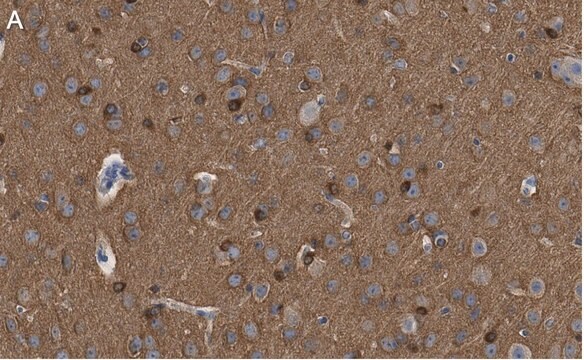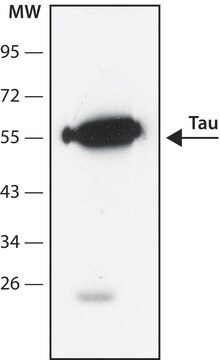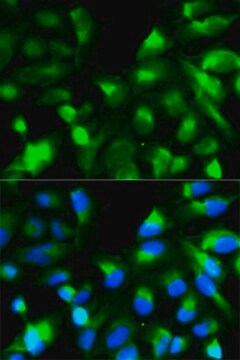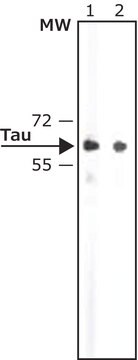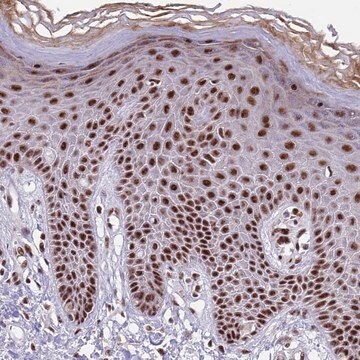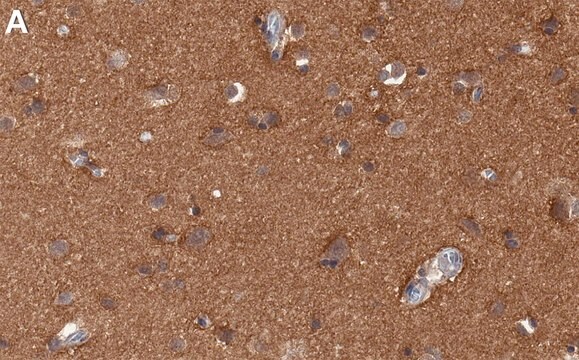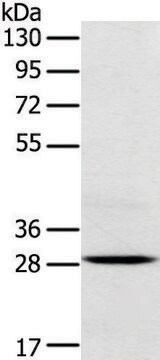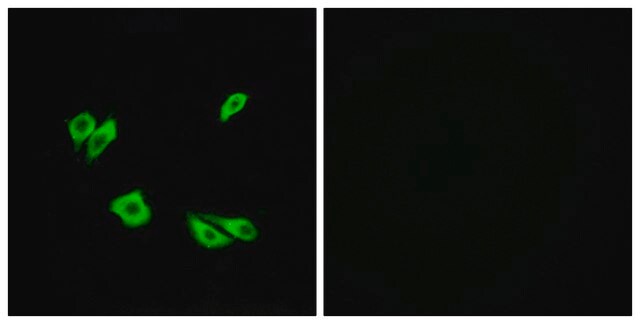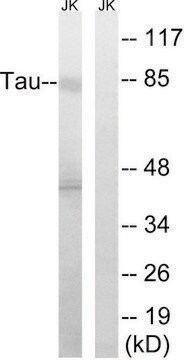MABN471
Anti-Tau Antibody, PAD, clone TNT-1
clone TNT-1, from mouse
Sinónimos:
Microtubule-associated protein tau, Neurofibrillary tangle protein, Paired helical filament-tau, PHF-tau, Tau
About This Item
Productos recomendados
biological source
mouse
Quality Level
antibody form
purified antibody
antibody product type
primary antibodies
clone
TNT-1, monoclonal
species reactivity
mouse, rat, human
technique(s)
ELISA: suitable
dot blot: suitable
immunofluorescence: suitable
immunohistochemistry: suitable
western blot: suitable
isotype
IgG1κ
NCBI accession no.
UniProt accession no.
shipped in
wet ice
target post-translational modification
unmodified
Gene Information
human ... MAPT(4137)
mouse ... Mapt(17762)
rat ... Mapt(29477)
General description
Immunogen
Application
Neuroscience
Neurodegenerative Diseases
Immunohistochemistry Analysis: A 1:2,000 dilution from a representative lot detected Tau, PAD in human Alzheimer′s brain tissue.
Immunohistochemistry Analysis: A representative lot from an independent laboratory detected Tau, PAD in normal and Alzheimer′s tissues from entorhinal cortex, hippocampus, inferior temporal gyrus, and superior gyrus of control (Kanaan, N. M., et al. (2011). J Neurosci. 31(27):9858-9868.).
ELISA Analysis: A representative lot from an independent laboratory detected Tau, PAD in recombinant Tau protein (Kanaan, N. M., et al. (2011). J Neurosci. 31(27):9858-9868.).
Quality
Western Blot Analysis: 1 µg/mL of this antibody detected Tau, PAD in 10 µg of rat cortex tissue lysate.
Target description
Linkage
Physical form
Storage and Stability
Analysis Note
rat cortex tissue lysate
Other Notes
Disclaimer
¿No encuentra el producto adecuado?
Pruebe nuestro Herramienta de selección de productos.
Storage Class
12 - Non Combustible Liquids
wgk_germany
WGK 1
flash_point_f
Not applicable
flash_point_c
Not applicable
Certificados de análisis (COA)
Busque Certificados de análisis (COA) introduciendo el número de lote del producto. Los números de lote se encuentran en la etiqueta del producto después de las palabras «Lot» o «Batch»
¿Ya tiene este producto?
Encuentre la documentación para los productos que ha comprado recientemente en la Biblioteca de documentos.
Nuestro equipo de científicos tiene experiencia en todas las áreas de investigación: Ciencias de la vida, Ciencia de los materiales, Síntesis química, Cromatografía, Analítica y muchas otras.
Póngase en contacto con el Servicio técnico